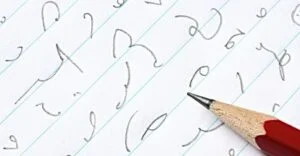In the digital age, note-taking has become a breeze with the aid of technology. Apps and voice recorders make it effortless to document meetings, conversations, and ideas. However, before these modern conveniences, people relied on a remarkable method known as shorthand.
Shorthand, a system of rapid writing, has a rich history dating back to ancient times. Initially attributed to Xenophon, a Greek historian, its widespread use came during the Roman Empire for swiftly recording spoken words. The Latin shorthand system persisted for centuries before waning in the Middle Ages.
Revived during the Victorian Era and utilized during the Reformation for expediting Bible translations, shorthand experienced a resurgence in popularity. Its modern form emerged through demand for stenographers during the Industrial Revolution.

Sir Isaac Pitman introduced a contemporary shorthand version in 1837, while his brother brought it to America in 1852. Although Pitman shorthand thrived in Britain, John Robert Gregg’s adaptation, known as Gregg Shorthand, gained prominence in the United States.
Shorthand’s efficacy lies in its ability to condense words into simplified forms, facilitating swift note-taking. While it may resemble ancient script due to its unique symbols, shorthand’s dots and loops differentiate it. Gregg’s shorthand, capable of transcribing 280 words per minute when mastered, remains relevant in legal, medical, and secretarial fields.
Although modern technology has largely supplanted shorthand, it endures in specialized professions. Its legacy serves as a testament to humanity’s ingenuity in devising efficient communication methods.





